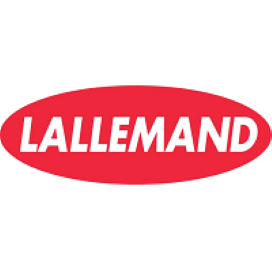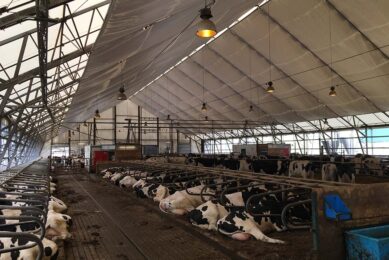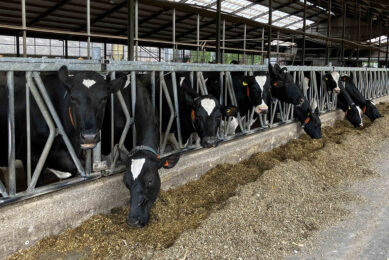True or False, there is no need to treat first cut grass silage?
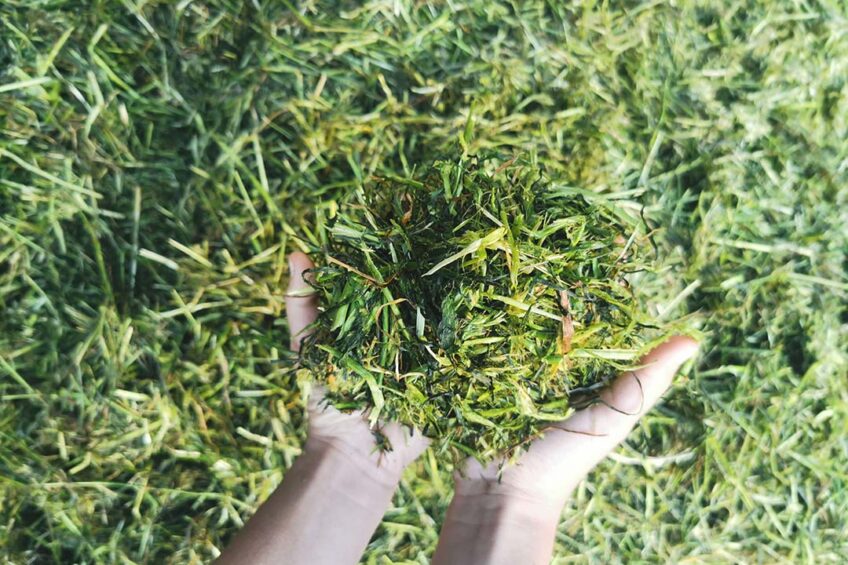
New research has shown that treating grass silage with an inoculant can improve dry matter (DM) intakes in dairy cows by 1.5kg a day and lift milk production, demonstrating the return on investment of using an additive on all cuts including the first of the season.
Creating high-quality silage involves meticulous management, from the field to the storage bunker. Bernard Andrieu, Technical support Manager, Lallemand Animal Nutrition, says cutting corners, such as skipping the use of a silage inoculant, can lead to disappointing results.
Higher-quality silage
The company collaborated with the Centre for Dairy Research at Reading University, England, to investigate the impact of using Magniva Platinum 3 on grass silage. The findings were significant. Over the initial 6 weeks of feeding, cows that consumed the treated forage ingested an additional 1.5 kg of dry matter (DM) per day compared to those fed untreated silage. This improved intake can be attributed to the higher-quality silage produced by Magniva Platinum 3. In contrast, the control silage, which heated and appeared less palatable, would lead to reduced feed consumption. There was a trend for more Fat Corrected Milk (FCM) in cows consuming the treated forage of 1.9kg/day.
The forage was also aerobically stable for longer, resulting in lower energy losses. “Magniva kept the silage cool,” Bernard explains. “We saw highly significant differences in aerobic stability of +2 and +3°C and a significant 8°C difference for peak temperature reached.’’ The observed difference will yield an additional 28 megajoules (MJ) of energy per ton of fresh weight in the treated silage. When this silage is fed to cows, it has the potential to yield an extra 5.3 litres of milk.
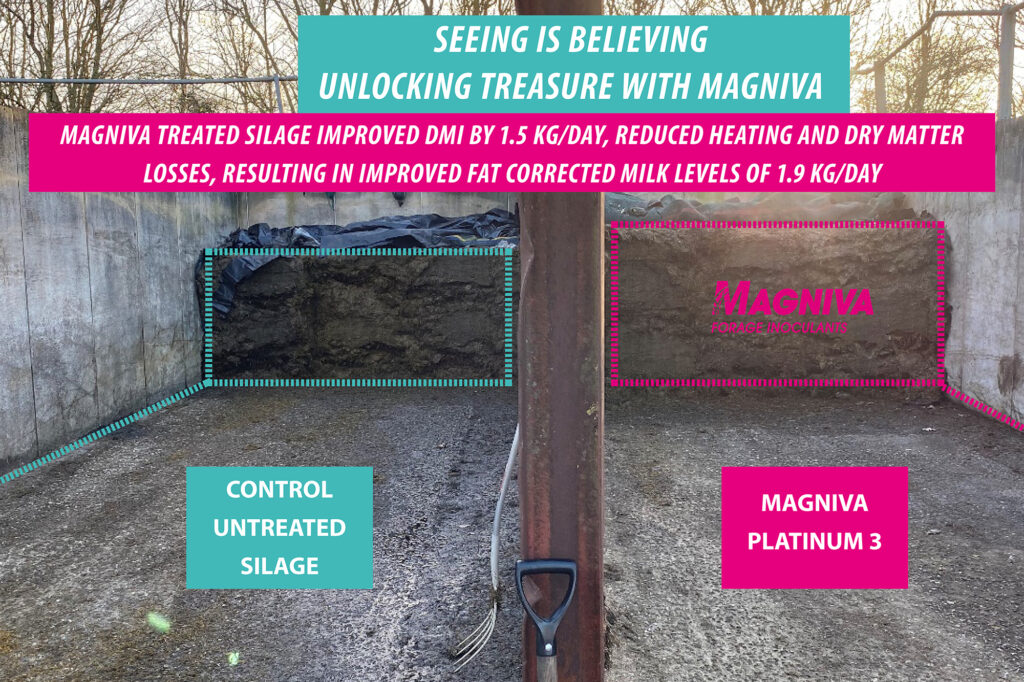
First cut is the foundation of a good meal
The trial has shown the value in using an additive on all cuts of grass silage, not least the first crop. Bernard says that when it comes to silage, the first cut is like the foundation of a well-prepared meal. “Just as quality ingredients are essential for a delicious dish, the initial grass silage you harvest sets the stage for on-farm profitability. But here’s the catch: even though first-cut grass boasts excellent sugar and protein content it doesn’t automatically translate into high quality grass silage.’’
The first cut typically has a higher nutritional value and yield compared to subsequent cuts, therefore its impact on farm profitability cannot be overstated. “Why risk compromising your hard work by forgoing treatment with a silage inoculant?’’ Bernard questions.
First-cut grass forage tends to have lower DM content than later cuts, presenting challenges during the silage-making process and making it more susceptible to spoilage during fermentation and at feeding. Increased protein content, while beneficial for feeding, can hinder efficient fermentation. Untreated silage may ferment slowly, resulting in reduced sugar levels, protein content, digestibility, and overall palatability. “Such losses can significantly impact your farm’s bottom line making the addition of a silage inoculant a sound investment,” says Bernard.
Treating the first-cut silage mitigates risks
Placing later cuts of grass silage on top of the first cut introduces additional complexities. “Essentially you’re exposing the entire silo to air, creating an environment ripe for undesirable microbial growth,” Bernard points out. To mitigate these risks, consider using an inoculant, he suggests. “Treating your first-cut silage ensures better preservation and minimises the chances of heating and spoilage when storing subsequent cuts in the same silo.’’
Join 13,000+ subscribers
Subscribe to our newsletter to stay updated about all the need-to-know content in the dairy sector, two times a week.


